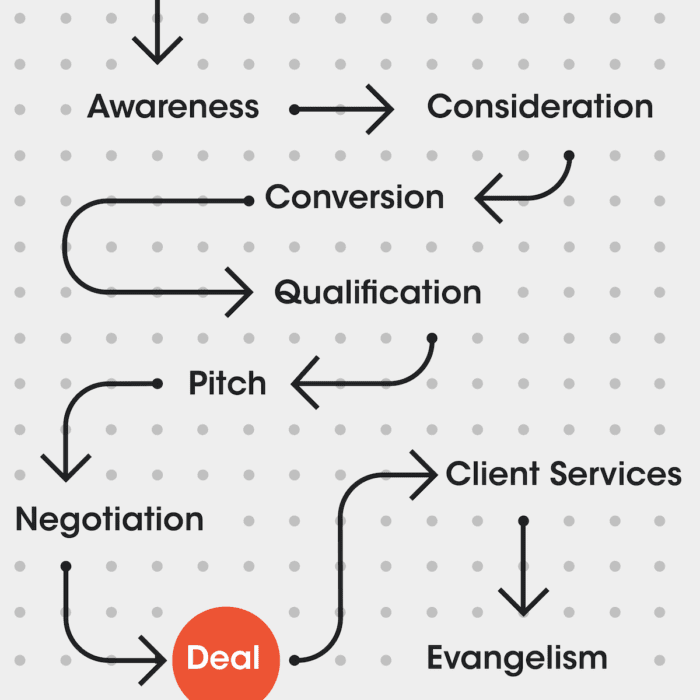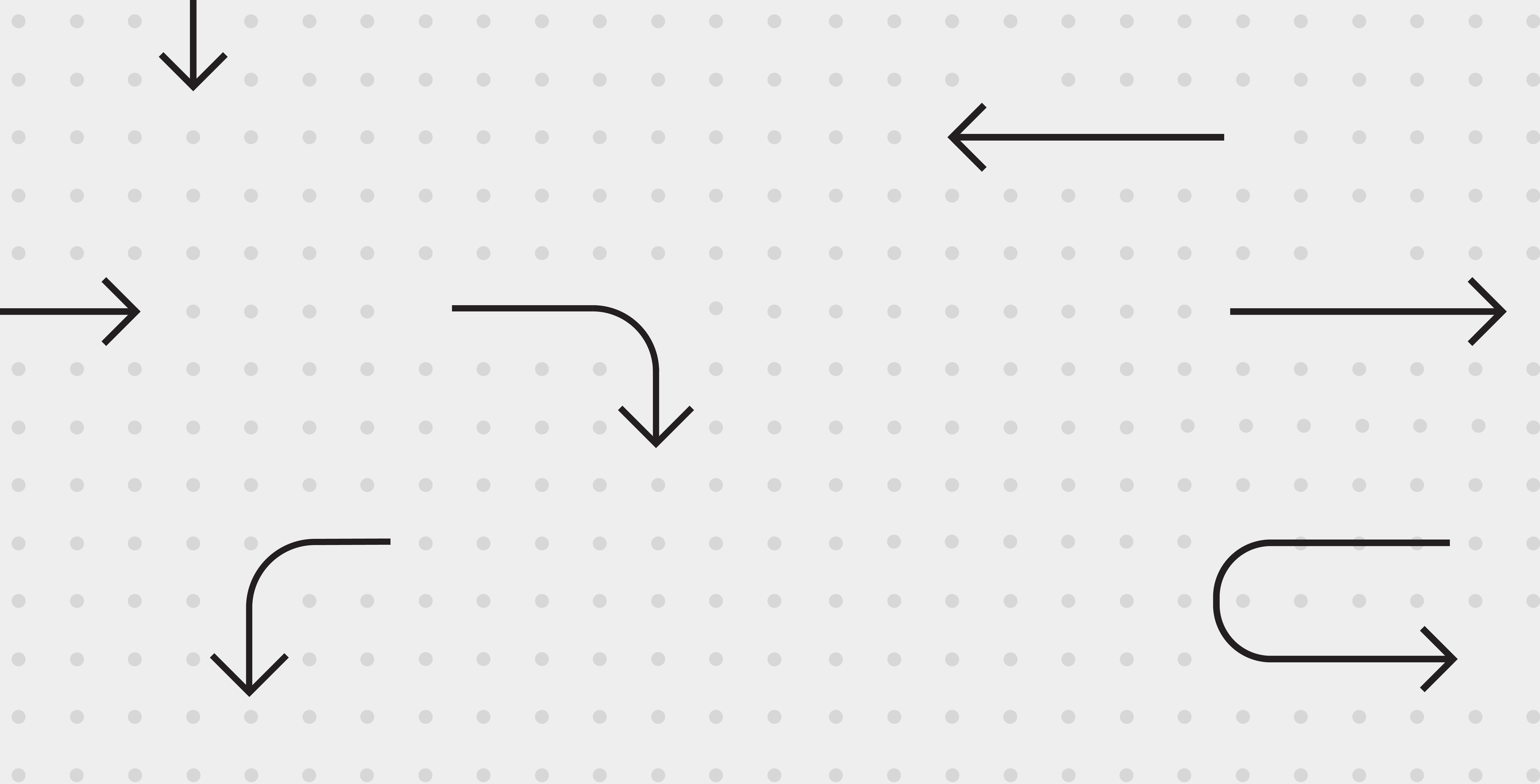While lead acquisition is probably the lead lifecycle event that marketing leaders think about most, it’s really just one part of the journey. In order to ensure a successful long-term business model, it’s important to think about every stage in the sales and marketing funnel and to deploy the right tools and tactics for each step.

Here’s a review of the stages a customer will follow on their way to purchasing and then recommending your product, and some tips on what to try for each one.
Awareness Stage
Defining your audience and finding prospects
Ideally, before your prospects ever shop for the solution you offer, they’ll already know who you are, what you do, and why you have the best option to solve the need they’ll inevitably have. You can accomplish this in three steps:
- Map out your ideal customer profile and the key personas within those businesses.
- Research the best placements to reach this audience and the type of messaging needed to capture their attention and have them remember your brand.
- Launch campaigns that spread your message to your audience.
At this stage you’ll leverage research tools and your internal data to better understand who you should be speaking to, where this audience can be reached, and what message will resonate most.
The campaigns that you are most likely to run to build awareness and educate your prospects will involve video, static and animated images, and audio ads, on a mix of digital and traditional channels.
Your goal is to get the best value for your awareness budget, which means reaching as much of your audience as possible with a compelling message so that they remember your brand and think of it in a positive way.
Consideration Stage
Standing out from the competition
Once a prospect is looking to solve the type of challenge you can help them solve, expect them to start comparing their options. This is the consideration phase of the customer journey. You can still win the day if your prospect only first encounters you during this stage, but you’ll have more successful outcomes more often if awareness has already been built by this point.
Use paid search campaigns to make sure you show up when a prospect is doing their research, and leverage custom intent audiences to serve display and video ads to people interested in the problems you can solve.
During the consideration phase your prospect is likely to perform internet searches on solving their pain point and may even be downloading informational resources to help them make a decision. At this stage, you need to be ready and waiting with material that answers the questions your prospects are likely to have:
- How will your product or service address the pain point?
- What sets it apart from the competition?
- What value adds are included?
- What brands are already using the solution and what do they have to say about it?
- What is the cost or pricing model?
Answer these questions to your prospect’s satisfaction and they’re likely to include your solution on their shortlist of options.
Acquisition Stage
Setting up the marketing to sales handoff
The end of the marketing journey and the start of the sales cycle often happen at this stage: lead acquisition. Here your goal is to drive prospects to take a specific action as well as to provide their contact details and the expectation of a follow-up from your business.
Your paid campaigns will be important here to drive as much qualified traffic as possible, but attention to detail might be even more crucial, focusing on User Experience and Conversion Rate Optimization.
Testing different forms and experiences will help you strike the right balance between lead volume and lead quality. Using the right call to action and imagery on-page will ensure your prospects have proper expectations for their interactions with the sales team.
At the end of this stage, the marketing team will hand off MQLs to the Sales team so that they can qualify prospects one by one.
Discovery and Qualifying Stage
Identifying specific pain points and ensuring the right fit
After an MQL has been transferred to the sales team, the next step is generally lead scoring and discovery. Normally at this stage before a sales rep presents the full pitch, the team needs to be sure they are speaking to someone with a suitable role from a suitable company.
To qualify a prospect, a sales development rep will normally try to contact the prospect to ask a series of qualifying questions. The marketing team can help out here too by preparing pre-pitch email sequences that give prospects the chance to answer these questions at their own pace.
The Sales Pitch
Presenting the solution
Here the focus is firmly on the sales and product teams as they present the solution to the prospective client. At this stage, your CRM will determine whether all the work you put into getting the prospect this far in the journey will be put to good use or not.
By collecting precise information in the lead acquisition stages and adding detailed notes to the contact record for every touchpoint along the way, you can set your sales team up for better outcomes by giving them the details they need to connect with the prospect and get to the core of their pain points.
The Negotiation
Finalizing the details
Depending on your solution, your sales rep may need to keep negotiating with a prospect after the sales presentation to finalize every important detail. Highly targeted marketing campaigns can help at this stage by ensuring your solution is top of mind for your contact and the influencers in their sphere.
Another element that is handy at this stage are tools that listen for key visitors on various parts of your website. Depending on the CRM and website tracking you have in place, you can build alerts to get notified when key contacts return to your website (if the contact has a tracking cookie attached). There are also tools that can identify when people from specific companies hit your website. All of these tactics can provide valuable insight about the right time to reach out to a prospect and the aspects of your solution that they are most interested in.
The Close
Winning the deal
This is what your team’s hard work and preparation comes down to, you’ve attracted the prospect, got them interested in your product, enough so that they’ve given you their contact info and spoken to the sales team, maybe multiple times. They have the offer, the only question left is will they sign it?
At this critical stage, your CRM should be set up to remind the sales agent early and often to check in with the prospect until that contract is signed. You may also want to run remarketing campaigns to this segment of critical prospects to make sure your brand is top of mind while the contract is awaiting signature.
Customer Success
Ensuring adoption and satisfaction
Congratulations! Your team closed the deal. But the work isn’t done, it’s just getting started. Now you need to onboard your client to ensure that they adopt your product or service, engage with it, have it solve the pain point or bring in positive ROI, and ultimately have a satisfying customer experience.
Email campaigns, how-to videos, knowledgebase articles, and a service team that knows the offering and can help troubleshoot any issues that arise will all be critical in winning this stage of the customer journey.
Evangelism
Word of mouth, positive reviews, and referral programs
You’ve sealed the deal and even impressed your new customer to the point that their customer satisfaction surveys rate you through the roof. That’s great! But how do you mobilize all that goodwill?
Happy customers are one thing, but evangelists that go out and spread your brand to their network will turn you from a successful business to a blue chip. There are several ways to mobilize your satisfied customers, here are just a couple:
- Ask them: Start simple, if you know your customers are happy, ask them to leave you a positive review or testimonial. Sites like Capterra and G2 can even help you get started with free review campaigns!
- Reward them: Another way to get your loyal customers to spread the word about your service is by offering an incentive. A direct commission, a gift card, or a discount on the service are all great incentives for your affiliate program and will give your biggest fans a reason to become evangelists.
The Takeaway
Every step in the customer journey is important, having a great lead acquisition engine is important, but it will only take you so far if your leads are not qualified or if your qualified leads aren’t properly nurtured. A complete lead lifecycle management strategy will include plans to take a prospect well past the lead acquisition stage to the customer acquisition step and beyond.
If you need help building a solid lead lifecycle strategy, fill out this form.
Read it first:
Get new articles delivered to your inbox




Share this: